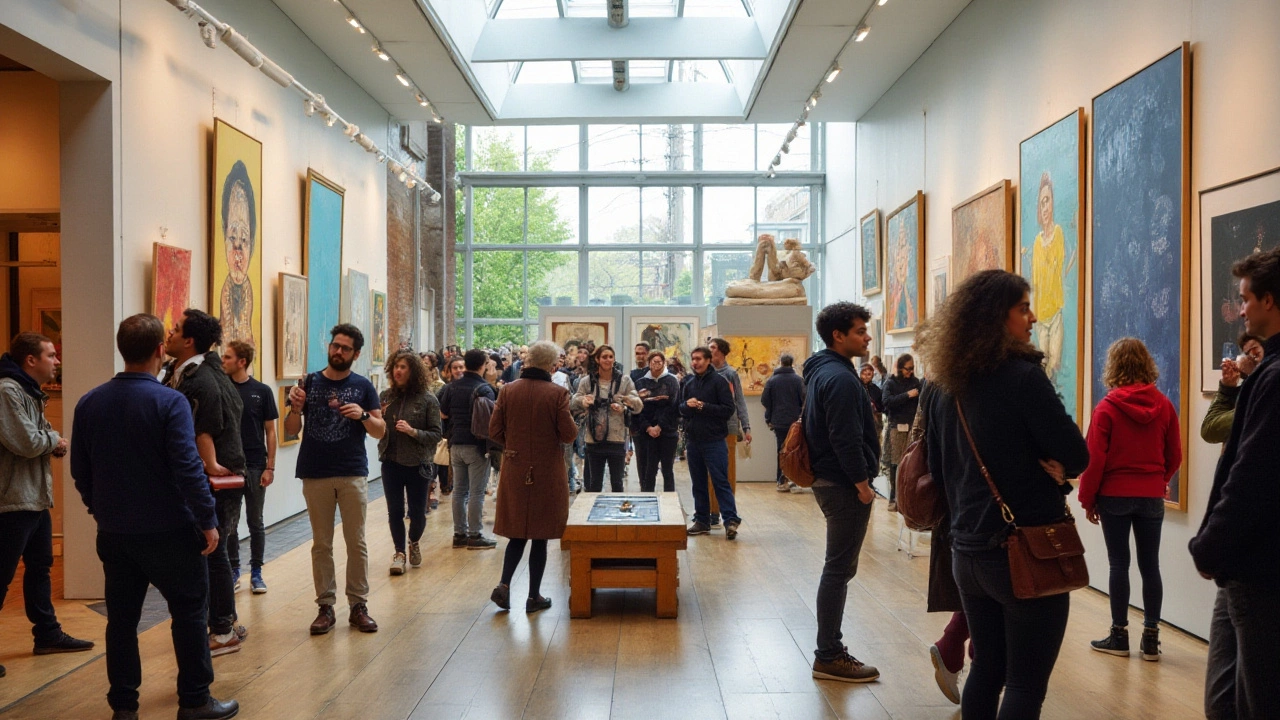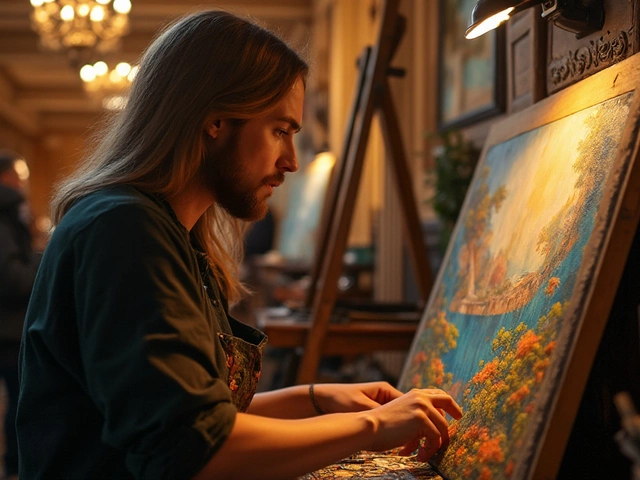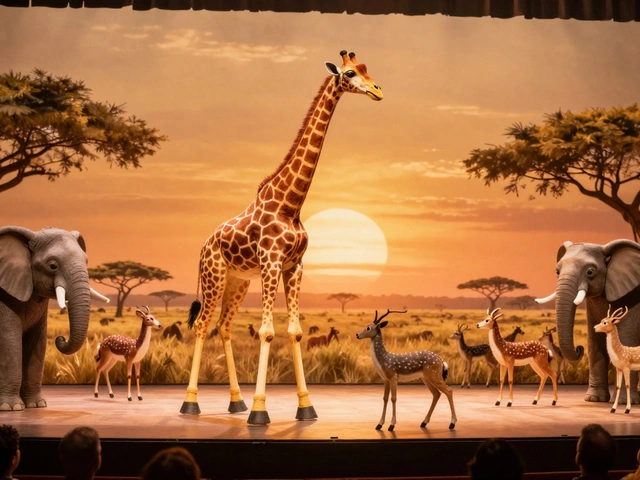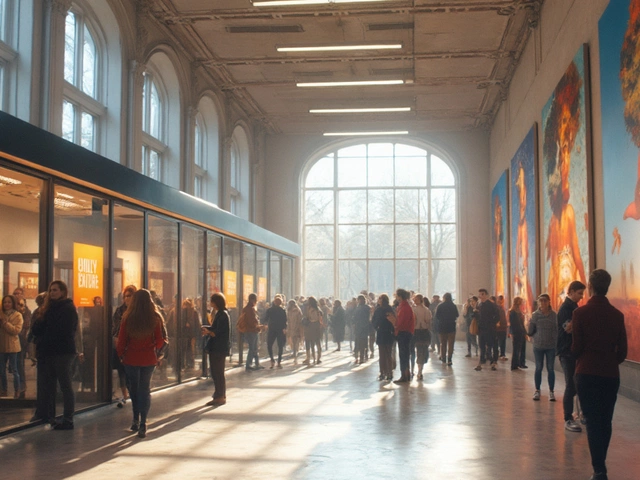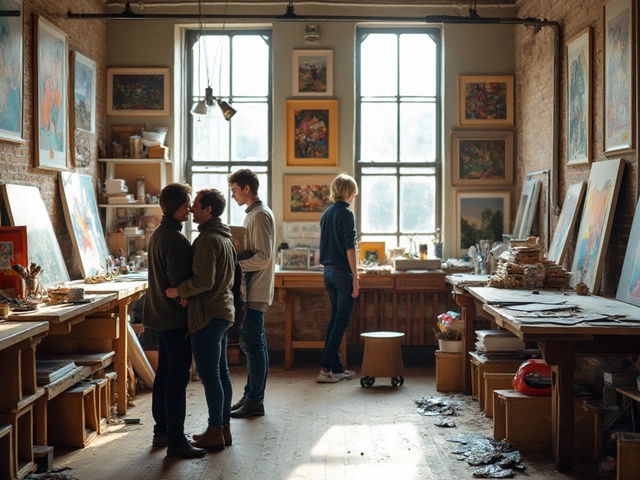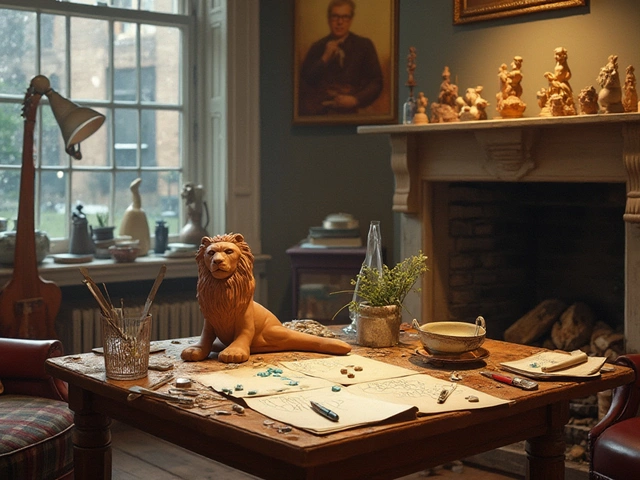When thinking about contemporary art, one might picture dazzling installations, abstract paintings, or thought-provoking performances. This genre is as diverse as it is challenging, continually evolving to reflect the shifting sands of the world around us. Yet, capturing its essence in a single definition proves elusive, almost like describing the nuance of a profound conversation.
In this article, we'll navigate the varied landscape of contemporary art, exploring its roots and dissecting its significance in today's society. It goes beyond what meets the eye, engaging with technology, media, and new ideas that reshape our understanding of creativity. Let's embark on a journey to unearth what contemporary art truly embodies and enjoy the tapestry it weaves into our cultural fabric.
- What Defines Contemporary Art
- The Evolution of Artistic Expression
- The Role of Technology and Media
- Impacts on Society and Culture
What Defines Contemporary Art
Contemporary art stands as a testament to the creativity and innovations of the current era. Defining it can sometimes feel like trying to hold water in your hands—ever-changing, fluid, and subject to interpretation. In the simplest sense, contemporary art refers to art created in our lifetime, or more accurately, after the 1970s. It's a period characterized by its ability to diverge from the past, embracing a multitude of voices, styles, and methods. Unlike art movements of previous centuries, contemporary art doesn't adhere to a single style or ideology, instead it acts like a global conversation among diverse, creative minds.
Significantly, contemporary art is marked by its willingness to delve into political, social, and personal themes, challenging the artist and the viewer alike to engage in a dialogue about these often provocative subjects. It is not uncommon for contemporary artists to explore issues such as identity, race, gender, and the environment, utilizing their works as platforms for expressing consequence and urging reflection. Many pieces seek to elicit an emotional response or change a perspective, making art not just a passive experience but one that invites or demands interaction.
Technology's fingerprints are visible across this art landscape. Modern tools, software, and platforms like social media are embraced by artists to reach wider audiences and disrupt traditional art spaces. This integration of tech has resulted in new forms like digital art, video installations, and interactive works, presenting novel ways to engage with audiences. The marriage of art and technology enhances accessibility, breaking down barriers that might have kept some people out of the modern art conversation before. As these works leave their studio confines to grace digital galleries, they reach a global stage that bends traditional notions of viewership and participation.
One of the salient aspects of contemporary art is its embrace of diverse media. Traditional forms like painting, sculpture, and printmaking still play essential roles, yet they're frequently combined with new materials or methods. Artists no longer limit themselves to canvas or stone—they might use recycled materials, sound, or light as integral parts of their work. This freedom allows for rich storytelling abilities and an infinite palette of expression. A stroll through a contemporary art museum or gallery is likely to present unexpected encounters, where traditional media are reimagined and juxtaposed with the cutting-edge.
“Art is not a mirror to hold up to society, but a hammer with which to shape it,” said Bertolt Brecht. This notion captures the activist spirit alive in much of contemporary art, where creative expression is intertwined with societal reform. By confronting the here and now, artists are not merely bystanders but active participants in shaping public discourse and community consciousness.
Notably, contemporary art continues to challenge institutional boundaries within the art world. The democratization of art creation means it's no longer the exclusive realm of the formally trained or those with elite gallery representation. The rise of
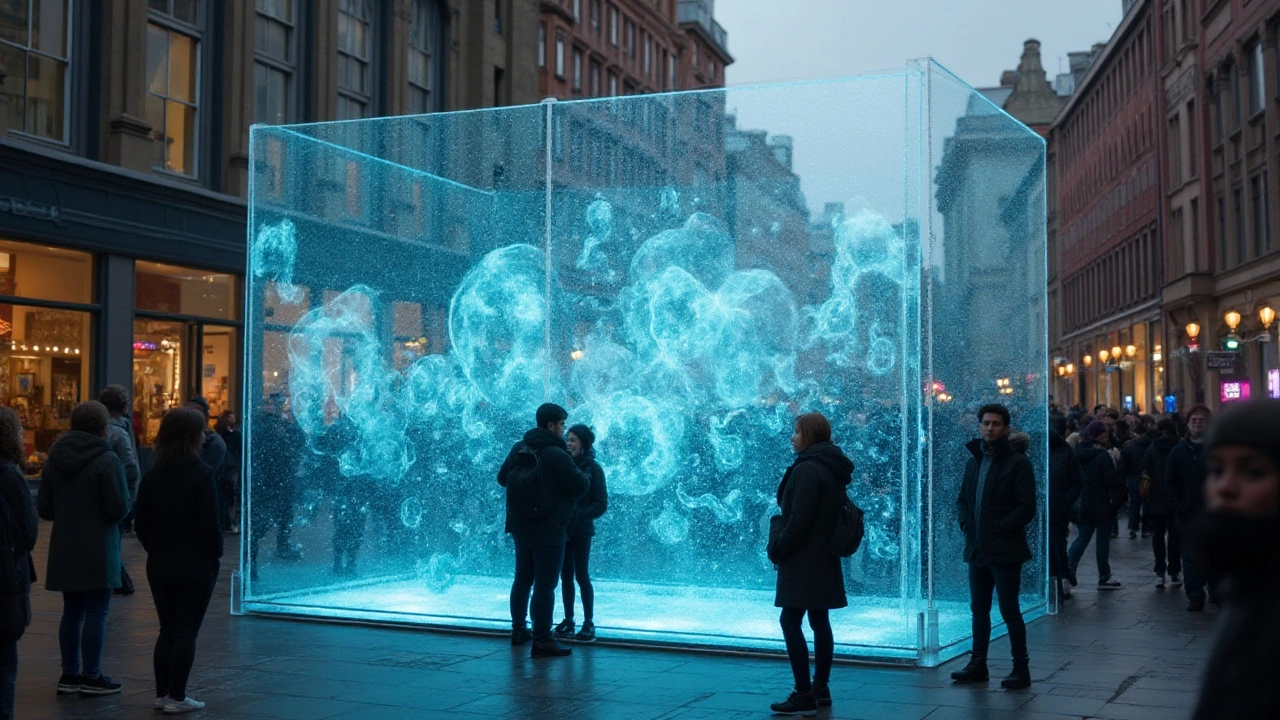
The Evolution of Artistic Expression
Over the centuries, art has undergone a transformation as varied and vibrant as the art itself. Consequently, contemporary art stands as a culmination of numerous traditions, styles, and philosophies that have invigorated human creativity. Traditionally viewed as the domain of easel painting and sculpture, art has cast off its constraints, evolving to include everything from digital compositions to spontaneous street performances. Consider the shift initiated during the Renaissance, where artists like Leonardo da Vinci articulated and mastered a dizzying array of techniques that redefined artistic possibilities. Fast forward to the bold, expressive strokes of the Impressionists who shed their reliance on strict cartography in favor of emotion and perception. This bold attitude laid the bedrock for what we now recognize as artistic freedom.
The 20th century was pivotal as it exploded with movements: Cubism fractured perspective, Surrealism unraveled the subconscious, and Abstract Expressionism found voice in raw emotion. Each created ripples that would influence art's trajectory. Pioneers like Picasso and Dali ushered in new considerations, paving the way for artists who push boundaries. It's in this period that the term modern art began to take form, setting the stage for what today's contemporary world would indulge in. An aspect often overlooked is the symbiotic relationship between society and art. Each development in society, whether political, technological, or social, has imprinted its mark on artistic expression.
The digital revolution has been one of contemporary art's most significant catalysts. A myriad of new forms harness the power of technology, from virtual reality installations that transport audiences to new worlds, to digital artists who wield code as their palette. This fusion of technology and creativity has birthed pieces that challenge traditional definitions and accessing via new mediums. In fact, renowned critic Nicolas Bourriaud captures the essence eloquently:
"Art is the perfect place to witness and test new ways of observing the world."This expansion invites us to redefine how we engage with and contemplate art, moving beyond the gallery to a global platform where boundaries blur and dissolve.
Amid all this change, the role of the artist has also transformed. They are no longer recluse creators but rather active participants in global dialogues. Artists voice societal fears and dreams, confronting audiences with fresh perspectives. They blend mediums, invite interaction, and, at times, integrate commercial elements, challenging what it means to be artistically pure. Perhaps the most telling sign of art's evolution is its rejection of an absolute definition. Today, artistic expression is a mosaic of voices, colors, and ideas, ever expanding and morphing. It acts as a mirror, reflecting humanity's intricate dance as it traverses the path of progress.
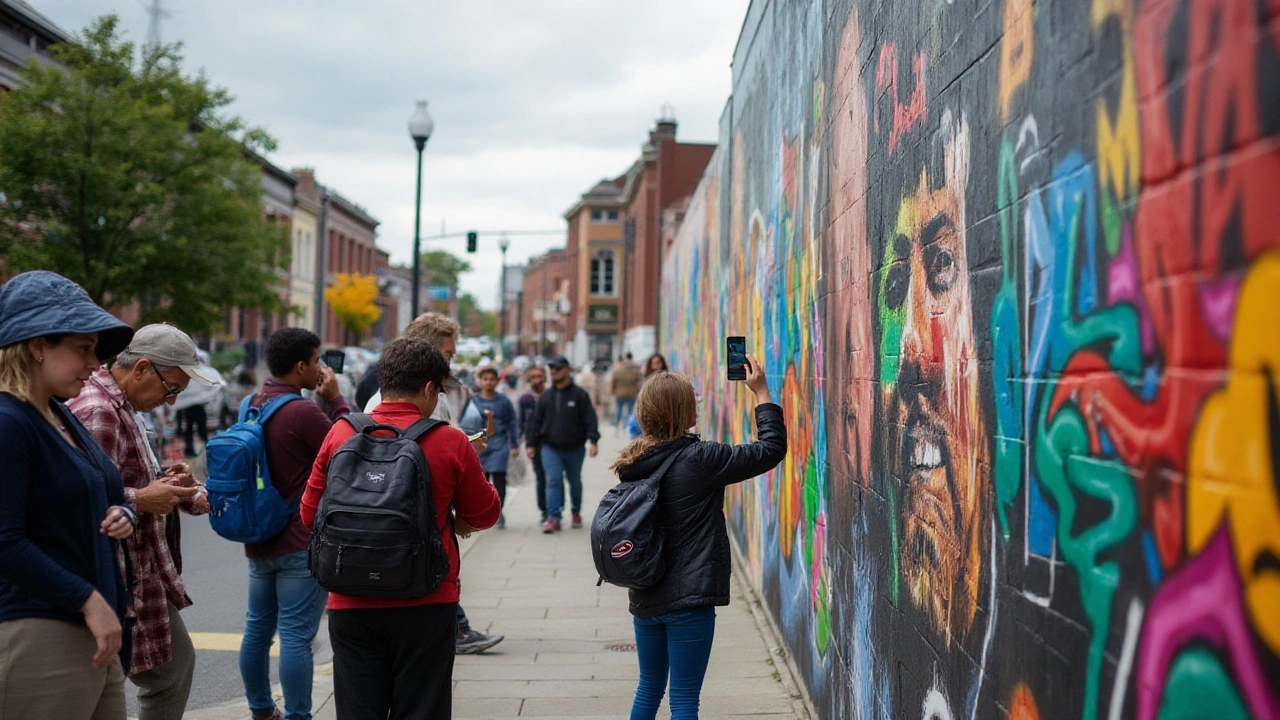
The Role of Technology and Media
As we plunge deeper into the 21st century, the interplay between contemporary art and technology is increasingly profound. The digital revolution has offered artists new ways to express themselves, blurring the lines between the traditional and the innovative. Once confined to physical forms—paint on canvas or chiseled stone—art now often takes digital form, existing as bits and bytes on a screen. This evolution has expanded not only the medium but also the reach of art, transforming artists into global communicators able to touch audiences far beyond the confines of a gallery. For instance, digital installations and virtual reality experiences have become a defining feature of modern exhibitions, allowing for immersive experiences that engage the senses in ways previously unimaginable.
Today's artists often utilize technology not just as a tool but as a language, crafting visual narratives that incorporate complex code, algorithms, and interactive elements. The influence of media plays a crucial role here, where platforms such as YouTube, Instagram, and TikTok have democratized access to art. No longer is art consumption an elite activity; it's available at the fingertips of anyone with an internet connection. This ubiquity has sparked discussions about ownership and originality, challenging traditional norms of authorship and copyright in the art world. Some purists worry this shift might dilute the essence of art, but others view it as an exciting expansion of what art can be.
An intriguing aspect of this technological integration is the artwork's ability to capture and interact with real-time data. Through programming, artists can create pieces that dynamically change based on weather, shifts in stock prices, or user input. It is akin to giving art a living, breathing quality, responding to and reflecting the world moment by moment. Statistically, over 70% of contemporary art exhibitions now include digital components, illustrating the significant impact technology has on the art world today. Such innovations invite audiences to actively participate in the creative process, making them co-creators rather than passive observers.
In the context of modern art, media technology's role grows even more intricate when considering the impact of machine learning and artificial intelligence. These technologies have been used to generate entirely new forms of art, challenging our understanding of creativity and authorship. The renowned AI-generated portrait, "Portrait of Edmond de Belamy," sold for a staggering $432,500 at auction, sparking a dialogue about the place of AI in the art hierarchy. "The role of the artist is to ask questions, not answer them," said Franz Kline, a sentiment that echoes the provocative inquiries made by technology-driven artworks today.
The marriage of media and art is not just about creating new forms, but also about preserving and disseminating art in ways never before possible. The digital archives of art institutions enable anyone to view their collections from anywhere in the world, promoting education and appreciation for art globally. Podcasts, digital tours, and online lectures have emerged as new bastions of knowledge sharing, making art history accessible outside the academic realm. These innovations suggest a future where art becomes even more intertwined with daily life, reflecting cultural shifts and technological advances with every phase.
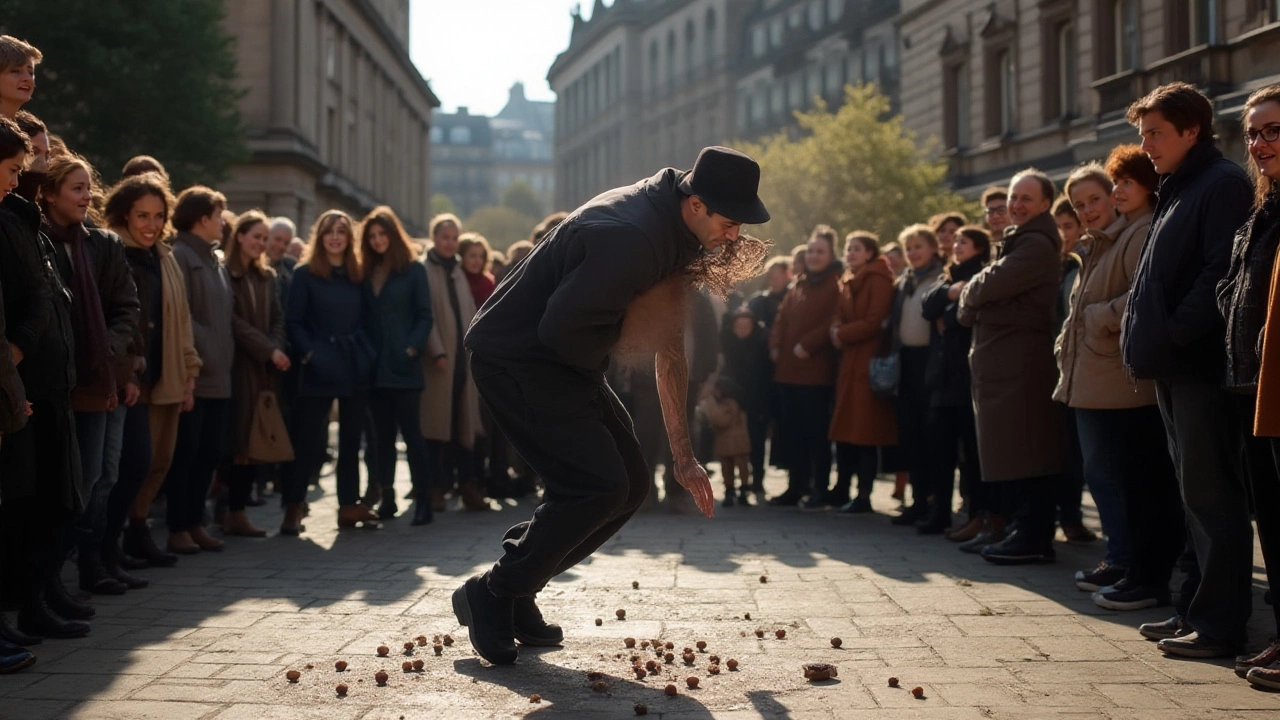
Impacts on Society and Culture
Contemporary art plays a vital role in shaping and reflecting societal values, a powerful mirror held up to culture that can provoke change and foster dialogue. It serves as a platform for voices that might otherwise remain unheard, tackling pressing issues like climate change, social justice, and identity. The ability of art to express complex ideas in relatable or provocative forms brings people together, creating communities around shared experiences and fostering empathy among diverse groups. This collective engagement can lead to movements that challenge societal norms, urging communities to rethink and, sometimes, redefine what's possible in our world.
In many urban spaces, contemporary art is not confined to galleries but spills into streets and public spaces. This democratization of art allows for greater interaction with audiences who may not frequent traditional art venues. Public installations can spark conversations and confront people with new ideas in their everyday environment, stimulating thoughts at bus stops or in parks. For example, the impactful street murals seen worldwide often highlight issues of political unrest or cultural pride, offering a canvas of solidarity and resistance. Such accessibility of art in the public domain makes it a vital catalyst for cultural exchange and understanding, bridging gaps between disparate communities.
Technology and digital media have further amplified the reach and scope of contemporary artistic expression, breaking boundaries of geography and access. Artists now employ digital tools to create interactive installations that engage viewers in novel ways, blurring the lines between creator and audience. This technological evolution allows art to transcend traditional media, introducing augmented and virtual realities into the realm of artistic experience. As a result, the influence of art extends beyond local communities, reaching a global audience and fostering a worldwide dialogue that addresses collective human experiences. The advent of social media has turned every smartphone user into a potential curator or critic, further breaking down elitist barriers historically associated with art appreciation.
"Art is not what you see, but what you make others see," famously stated Edgar Degas, and this notion is more relevant than ever in today's context. Contemporary art opens the door to myriad interpretations and discussions around the human condition, making it an indispensable part of our cultural lexicon.
Additionally, contemporary art also has tangible economic impacts, contributing to the creative economy by generating jobs and inspiring the creation of sustainable business models. Artists, galleries, museums, and art festivals inject vitality into communities, attracting tourism and reviving neglected neighborhoods. The infusion of creative industries not only stimulates economic growth but often encourages urban regeneration, turning abandoned spaces into vibrant hubs for innovation and learning. All these efforts culminate in a cultural richness that enhances the quality of life and broadens the city's appeal to locals and visitors alike.
To encapsulate, the impact of contemporary art on society and culture is profound and multifaceted. By acting as a beacon of innovation, discussion, and community building, art reshapes the cultural landscape and enriches our understanding of humanity. Its ability to adapt and incorporate new technologies ensures that it remains relevant, constantly challenging and inspiring the world we inhabit. As we continue to navigate today's complex social fabrics, contemporary art will persist as a critical medium for expressing the unspoken and connecting us on a deeper level.
